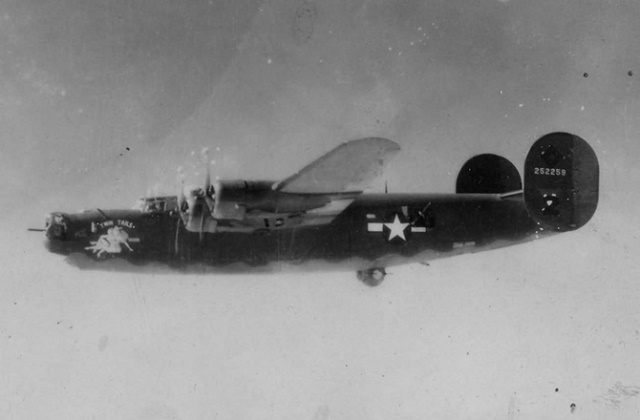During the Second World War, the term “Flying Coffin” was used to describe the Consolidated B-24 Liberator. This aircraft got its nickname from air crew who saw an inherent danger in the plane’s unforgiving control mechanisms. The plane earned a reputation for being rather unsafe, but was still heavily used during the war. Recently, the wreckage of a Flying Coffin was discovered in a forested area in Selva del Lamone.
SelvadelLamone is a natural reserve in central Italy. The plane discovered there had originally departed from San Giovanni in March of 1944. One of nearly three hundred bombers deployed to bomb German-controlled landmarks such as airports and bridges, this specific B-24H Flying Coffin was destined to bomb the Canino airport alongside seventeen other bombers. The mission was not a complete failure, but was severely inhibited by the weather conditions of the day. A counterattack by two German fighter planes led to the aircraft’s destruction, and only two men were lucky enough to parachute out and survive the attack.
One of the primary aspects of the B-24 Liberator that made the aircraft so unsafe was the fact that the plane was given a single exit door. This exit was near the rear of the plane, so it was difficult for crews to escape the Flying Coffin in the event of an emergency. Had the plane been constructed differently, more than two men might have survived the Canino bombing. Instead, the B-24H blew up midair and split into three different sections. The wreckage found by civilians was a grim site, with one body hanging from a tree and several others carbonized by the explosion, the Discovery News reports.
The two survivors were Sergeant Gunner Wallace Cleveland and Sergeant Tail Gunner John Ashby. Cleveland managed to evade the crash site, but upon landed he was captured and imprisoned by German forces. When Ashby escaped the Flying Coffin, he was able to briefly evade capture with the help of a local family. He was also helped by two South African soldiers who had broken free from a prison camp. Eventually, however, Ashby was captured and the two South Africans were tortured before being forced to dig their own graves.
Although the Flying Coffin garnered a deadly reputation, the aircraft still helped Allies greatly during the war. By war’s end, approximately 630,000 tons of bombs had been dropped from B-24 Liberators. The wreckage of the Flying Coffin found in Selva del Lamone is being prepped for display, and will be exhibited alongside panels detailing the story of the soldiers affected by its crash, including the two South Africans who died while helping an American ally.
